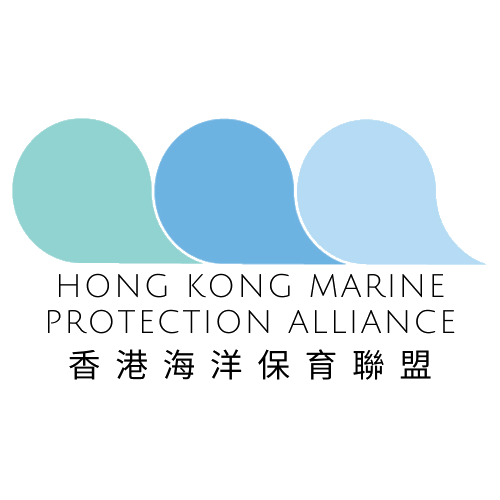
About HKMPA
At the Hong Kong Marine Protection Alliance, we are united by our passion for marine conservation and our unwavering commitment to safeguarding Hong Kong's precious marine environment for future generations

Our Story
We share a love for the ocean and we see opportunities to protect and even enhance Hong Kong’s marine environment, biodiversity, and fisheries. We work hard to educate, involve, and persuade people to establish more Marine Protected Areas for Hong Kong.
Officially launched on the 30th August 2022, the Alliance hopes to play the role as a partner on marine conservation with the Hong Kong government, and we jointly feel that we must apply more effort and engage together to protect our waters and increase the positive impact that our work can have on our environment and marine creatures.
Our Vision
We are dedicated to enhancing public awareness of marine sustainability and
promote marine conservation.
Enhance Public Awareness
Preserve Hong Kong Waters by widening Marine Protected Areas – Identify the sites that are rich in biodiversity, threatened and in urgent need of protection and promote them to be covered as MPAs by influencing local marine policy planning.
Preserve Hong Kong Waters
[1] Ng, T., Cheng, M., Ho, K., Lui, G., Leung, K. and Williams, G., 2016. Hong Kong’s rich marine biodiversity: the unseen wealth of South China’s megalopolis. Biodiversity and Conservation, 26(1), pp.23-36.
[2] WWF Hong Kong. Advocating for more marine protected areas. [online] Available at: <https://www.wwf.org.hk/en/oceans/advocating_for_more_marine_protected_areas/>.
[3] The World Bank. Marine protected areas (% of territorial waters) | Data. [online] Available at: <https://data.worldbank.org/indicator/ER.MRN.PTMR.ZS?end=2018&start=2016&view=chart>
[4] WWF Hong Kong. Advocating for more marine protected areas. [online] Available at: <https://www.wwf.org.hk/en/oceans/advocating_for_more_marine_protected_areas/>.
The members of HKMPA made a joint declaration that they would strengthen their efforts to protect and conserve Hong Kong’s Marine waters and the Alliance asks for:
-
30% of local waters to be gazetted by government as MPAs or protected by Other effective area-based conservation measures (“OECMs”) by 2030 in line with the COP15 and China national targets;
-
Pak Nai, Port Shelter, Ninepin Group and Shui Hau to be given priority and to be gazetted by government as Marine Protected Areas (MPAs);
-
Implement a robust management plan for MPAs to ensure protection and public enjoyment of these waters;
-
Increase the percentage of no-take zones to 20% within MPAs, from the current area of less than 0.1%; and
-
Integration of marine education from local kindergarten to secondary school curriculums with clear learning goals, objectives and pedagogies with reference to international standards in ocean literacy by 2030.
Expanding Marine Protected Areas (MPAs) to ensure sustainable management of marine resources and safeguard biodiversity
With 261 outlying islands and 1,180 kilometres of coastline, Hong Kong waters comprise of close to 60% of the Territory’s 1,648 square kilometres, which is more than its land area. Hong Kong waters are home to at least 5,943 (or more than one-quarter of all in China) recorded marine species - new species continue to be discovered, and approximately 6500 species are estimated [1]. In comparison to 40% of the SAR’s land area being protected, only 5% of Hong Kong waters are currently designated, or planned to be established, as Marine Protected Areas (MPAs, i.e. zones that are specified for protection of marine habitats and species) by 2023 [2], while 11% of the world waters are MPAs [3]. Among these 5% of MPAs, less than 0.01% of Hong Kong waters are considered “no-take zones,” in which fishing and vessels are prohibited [4].
Our Asks
The Ninepin Islands
The Ninepin Islands is made up of East Ninepin, South Ninepin and North Ninepin, and several small rock islets. There is rich biodiversity and coral diversity, with both Hard and Soft corals presented and which neither Pak Nai nor Shui Hau have. The islands are an important site for breeding terns.
_JPG.jpg)
© WWF-Hong Kong
Port Shelter
Port Shelter, as one of the best dive sites in Hong Kong, is famous for its high diversity of coral and marine fish species. It holds significant recreational and ecological values, providing important habitat for the ecosystem in Hong Kong.

© WWF-Hong Kong
%20pak%20nai.jpg)
© Derek Tang
Pak Nai and nearby sites
Pak Nai, a famous tourist spot with diverse types of coastal habitats and endangered species, is an essential feeding ground for horseshoe crabs, black-faced spoonbills, and other waterbirds. A total of 238 bird species visiting Pak Nai over the years demonstrates high biodiversity of the site.

Shui Hau
Shui Hau, a rare sheltered, intertidal sandy mudflat, nurtures juvenile horseshoe crabs before they migrate to the sea. It is also an important stopover site for the survival of over 20 species of migratory shorebirds.
© Tony Liu @114°E Hong Kong Reef Fish Survey
Expanding Hong Kong’s MPAs percentages are broadly aligned and resonate with China’s national aim to launch a five-year plan to protect its marine environment, it’s stated target of protection of 35% of its mainland coast and also the overarching principle of ecological civilisation.
Specifically, for the immediate term, HKMPA is focusing on the prioritisation of gazetting the following 4 sites as MPAs:

The Proposed Marine Protected Areas of Hong Kong (map below) was introduced back in August 2022 (official launch date of HKMPA). The map was a collective effort of 41 local ecologists and experts (including many that are members of HKMPA) engaged under the marine hotspot identification exercise.
